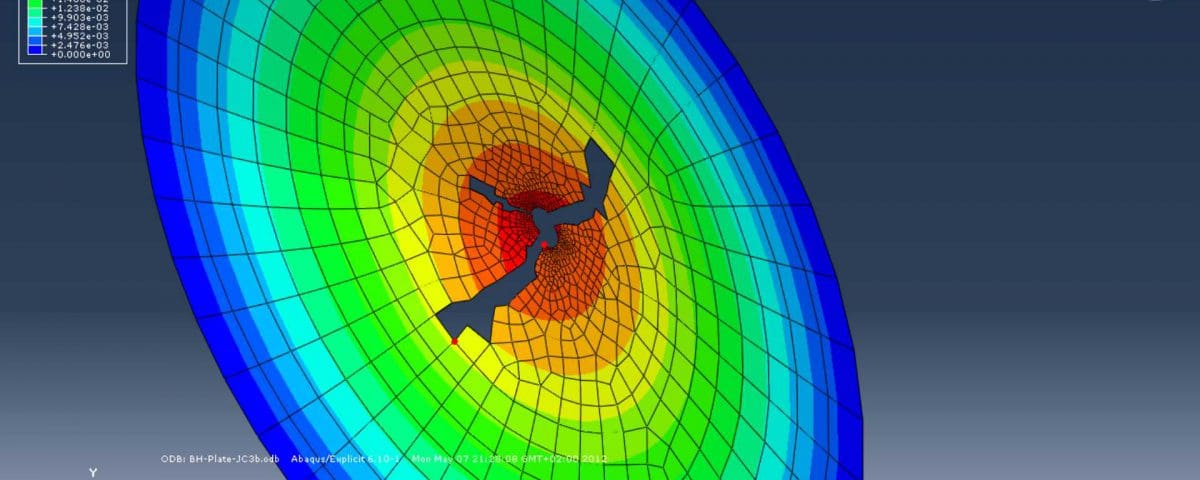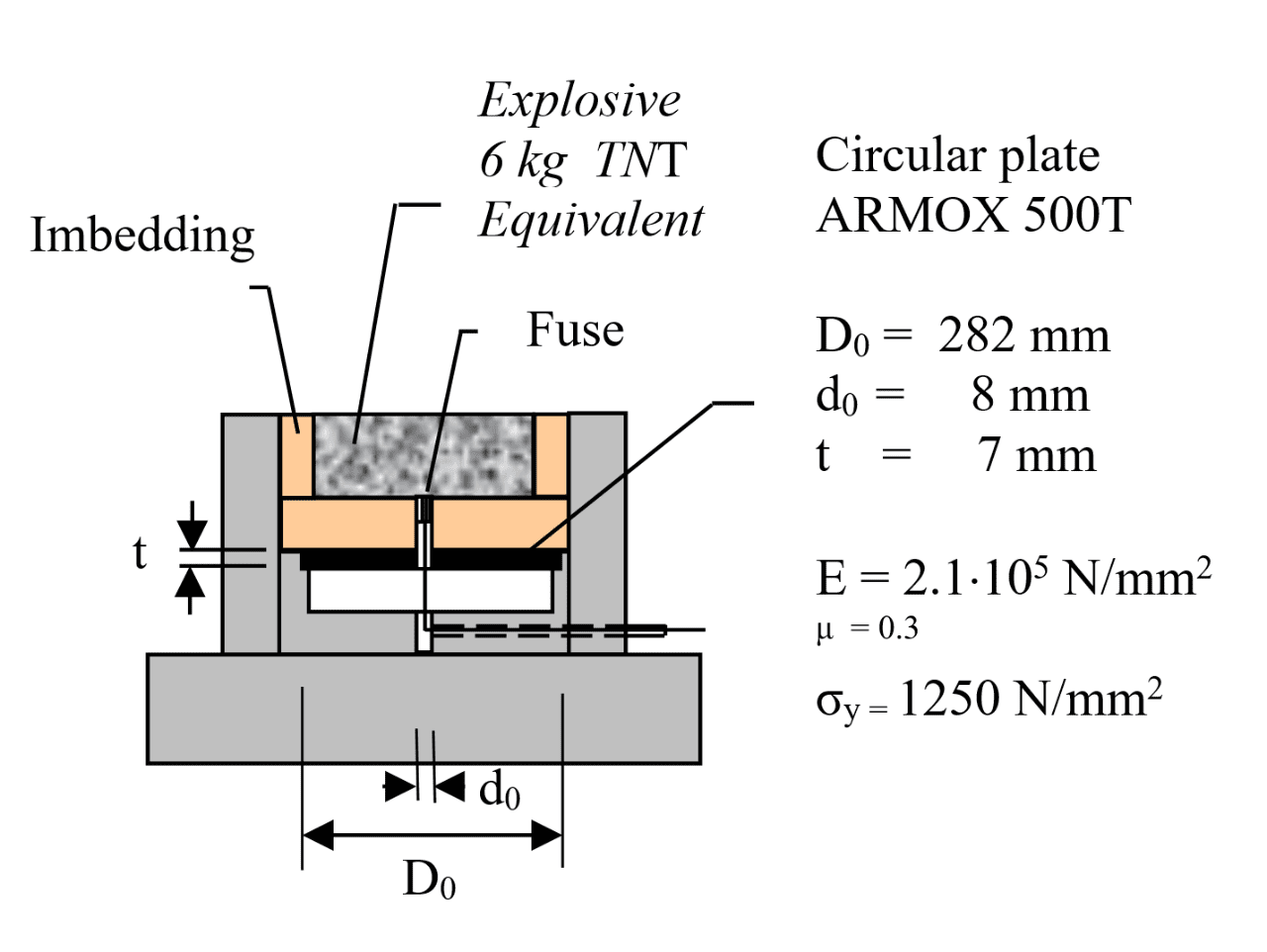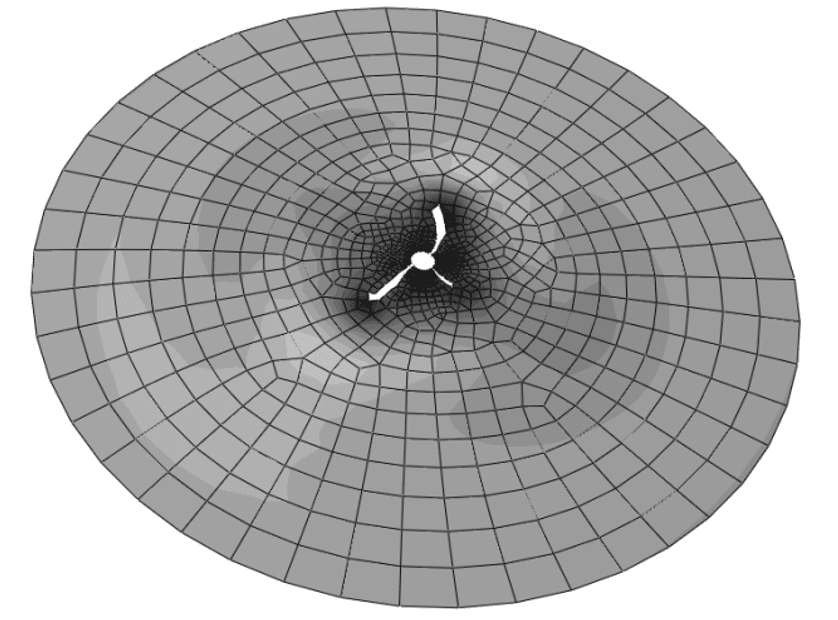
Bursting of a Circular Plate Subjected to Blast Loads Field Test – Computational Modeling
The most commonly used type of landmines is the 'blast mine' - with a charge-density of 6-8 kg of TNT-Equivalent - focused on the severe destruction of 'Light Armored Vehicles (LAV)', which is quite vulnerable to this kind of attack. For the development of protection systems, both for the vehicle and the occupants, full-scale explosive testing is required. In contrast to the buried explosives, in the present case the soil is replaced by a steel-plate-reflector for the targeting of the shock-wave (Figure 1). The mechanical discretization is shown in Figure 2.Figure 1: Blast mine – testing arrangement
Figure 1: Blast mine – testing arrangement
The objective of the study is the analytic-numerical simulation of the deformation and the cracking configuration of the circular counter plate, which was kindly provided by the Ministry of Defense and Sports, Austria (Figure 3).
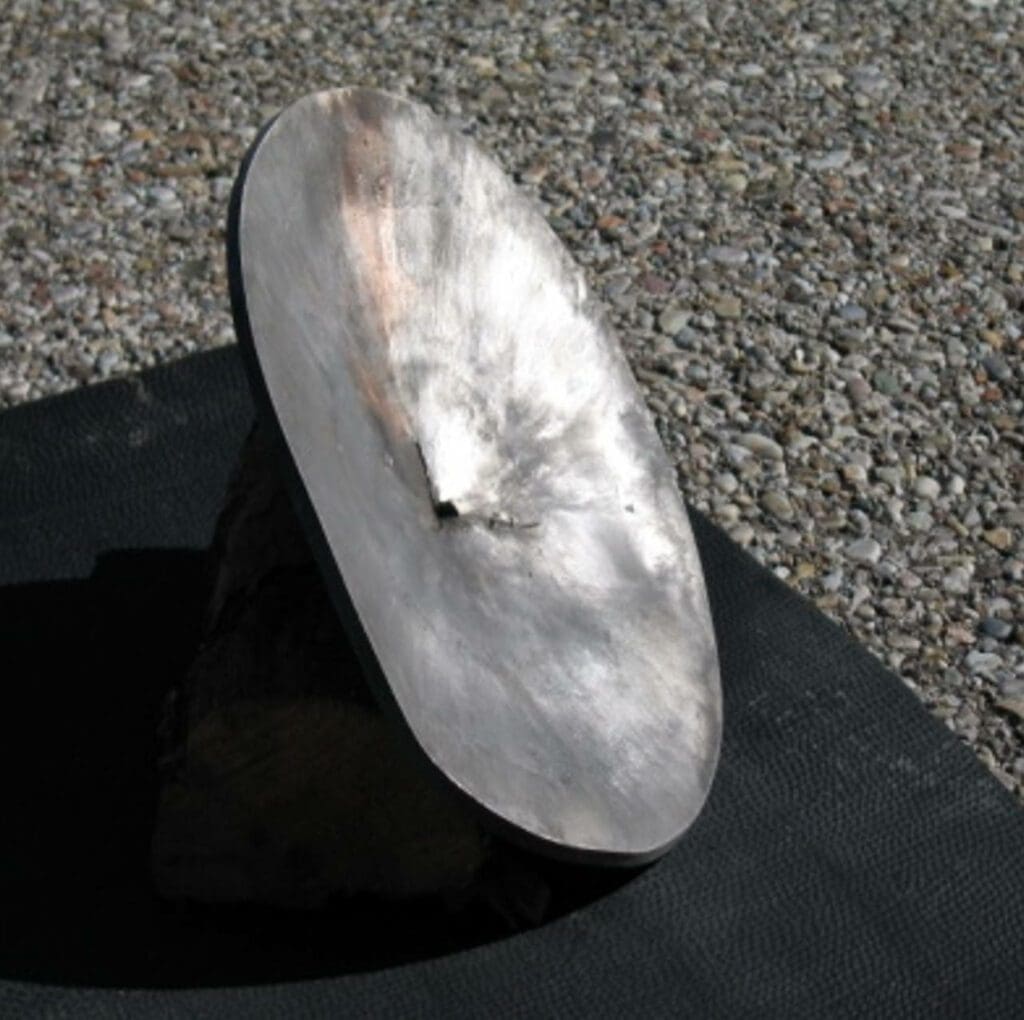
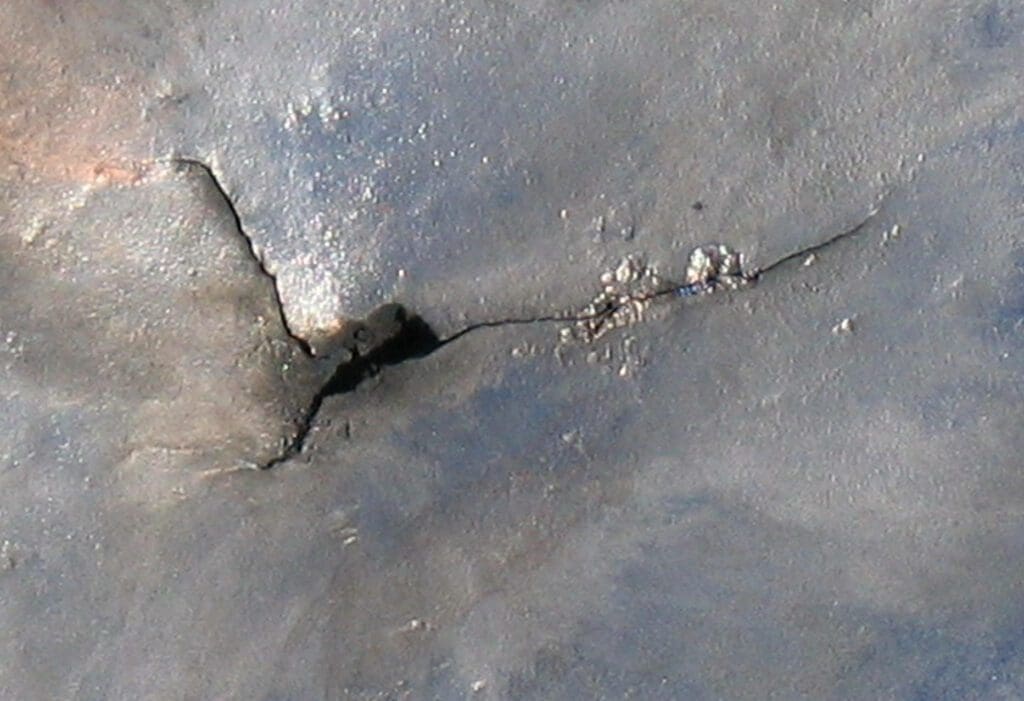
Figure 3: Blast induced deformed plate
Left a): lateral view | Right b): central crack formation
Left a): lateral view | Right b): central crack formation
The investigation was divided into two sections: Analytical and numerical modeling of the deformation of the 'homogeneous' plate in the form of a preliminary research - and detailed investigations of the crack system in the central area of the plate. The analytical investigation included the simply supported circular plate with regard to the mode of action, as plate and alternatively as membrane, outlined in the section 'Dynamic plastic behavior of circular plates' in [Norman Jones, Structural Impact, Cambridge University Press, 1997].
The main investigation is concerned with the numerical modeling of the crack pattern in the central area of the plate (Figure 3b). The investigation was performed with the software system ABAQUS. The following concepts have been postulated: ABAQUS Explicit -> Damage Initiation -> Damage Evolution -> Plastic Hardening -> Johnson Cook -> Rate Dependent -> Dynamic Explicit.
The relevant result is shown in Figure 4.
The main investigation is concerned with the numerical modeling of the crack pattern in the central area of the plate (Figure 3b). The investigation was performed with the software system ABAQUS. The following concepts have been postulated: ABAQUS Explicit -> Damage Initiation -> Damage Evolution -> Plastic Hardening -> Johnson Cook -> Rate Dependent -> Dynamic Explicit.
The relevant result is shown in Figure 4.
Figure 4: Computational modeling of the crack configuration in the center of a circular plate due to explosive impact loading.
The computational modeling of cracks in a dynamically highly stressed circular plate using the Johnson-Cook formulation, representing large strains and high strain rates, showed a satisfactory result.
H. N. Linsbauer: 8th European Solid Mechanics Conference, G.A. Holzapfel, R.W.Odgen (Eds)
Graz, Austria, July, 2012
H. N. Linsbauer: 8th European Solid Mechanics Conference, G.A. Holzapfel, R.W.Odgen (Eds)
Graz, Austria, July, 2012

